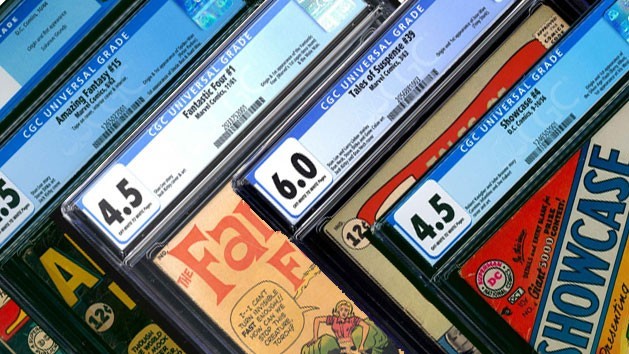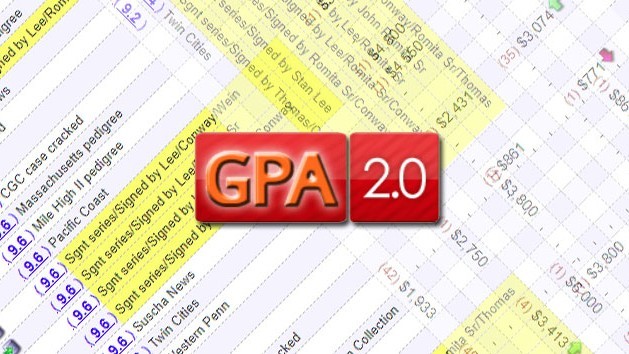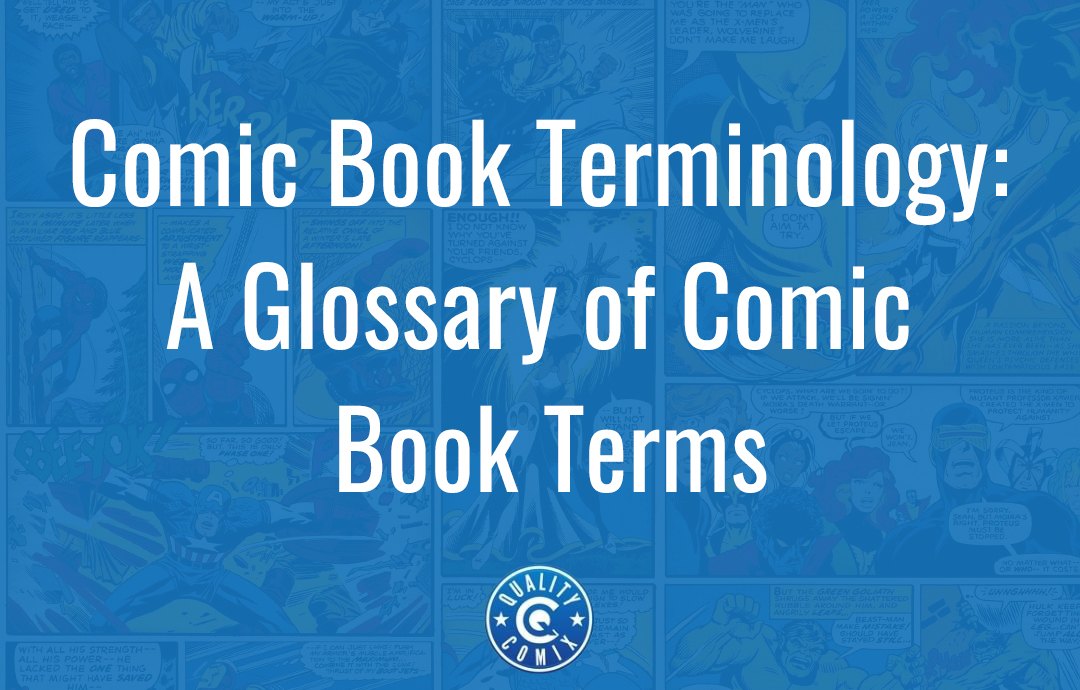
The world of comics is about more than just the names of the superheroes and villains on the pages. It's about the ecosystem of print and digital, the grading and the slabbing and the sale, and so much more.
Many people find themselves researching the exciting world of comics for the first time, either as a newbie collector or as someone who has come into possession of a collection they need to sell. It helps to understand the vocabulary we're likely to use when talking about it, so here's a glossary of standard comic book terms. If there's one we've mentioned and haven't explained, or if there's one you've heard that isn't on the list, please let us know in the comments, and we'll clarify by adding it!
General Terminology
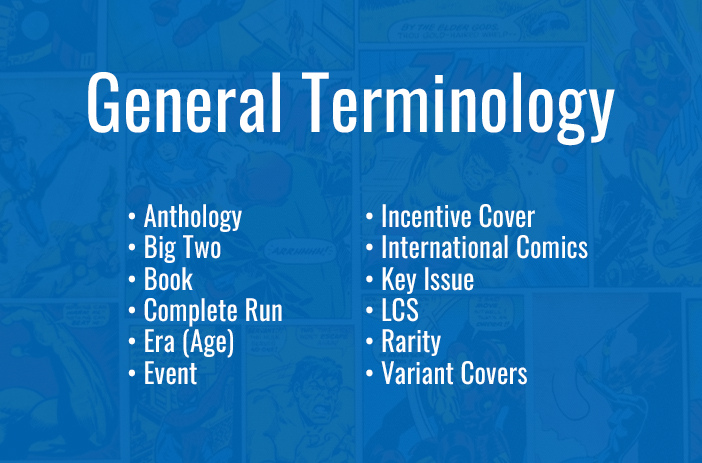
Anthology – A run of comics, or a more extensive trade or omnibus, made up of individual stories and contributions from various authors, typically centered around a common theme or character.
Big Two – Marvel and DC, the two largest comic publishers.
Book – An individual comic book may refer to a specific issue, a full-trade paperback, or an omnibus.
Complete Run – An entire run of each issue in a story arc. A longer ongoing series may be defined by runs with a given author or artist at the helm.
Era (Age) – The year range in which a comic was published. Definitions vary, but there are numerous "ages," including:
- Victorian Age: Anything before 1899. Not always used, but when used, it refers to some of the oldest proto-comics and captioned art, including illustrations from Ben Franklin and others.
- Platinum Age: Comics published before 1935. These range from newspaper funnies to the prototype "comics" that may only superficially resemble what comics have become.ll
- Golden Age: 1935-1947. This era begins with the debut of National, the company that would become DC, and encompasses the introduction of many now-iconic superheroes and other characters.
- Atomic Age: 1947-1958. A contentious age that many don't define as separate from Gold and Silver. The Atomic Age is characterized by a shift from wartime comics to post-war space exploration and sci-fi themes. This era also includes more comic books with darker themes, including true crime, western, war, and adult comics.
- Silver Age: 1958-1970. The slow growth of superhero comics, where Marvel stepped into the superhero ring and arguably took over, and many great names like Jack Kirby and Steve Ditko are active.
- Bronze Age: 1970-1985. An explosion in comics, with the introduction of many now-great characters and books, and many more that never catch on. Prices on comics skyrocket in this era.
- Copper Age: 1985-2000. Newsstand comic sales dwindle while direct sales take over. This era is also marked by a shift towards adults as customers rather than kids, a growing nostalgia for early comics, and a vast array of multimedia tie-ins.
- Plastic Age: 2000-2020. Comic pricing reaches an all-time high, the number of books explodes, and publishers start introducing digital comics. Numerous marketing gimmicks are created in an attempt to increase the collector's value of comics artificially. However, mass printing means all but the rarest variants are generally still cheap and readily available.
- Modern Age: 1985-Present. An alternative definition for post-2000 comics broadly encompasses all the trends that have picked up over the last couple of decades.
Event – A particular story arc or happening in a comic, usually of significant importance, typically changing the story's paradigm or framing. Marvel's Civil War is a famous example turned into a movie.
Incentive Cover – A variant cover that was only obtainable by a retailer if that retailer ordered a specific volume of the standard cover; by definition, rarer than the average cover.
International Comics – An umbrella term for comics originating from nations other than the USA.
- Manga: Japanese comics.
- Manhua: Korean comics.
- BD/Bandes dessinées: Franco-Belgian comics.
- Fumetti: Italian comics.
- British Issue: Typically the same comics as American comics, but with prices listed in Pounds.
Key Issue – A specific issue in a run that is generally sought-after for a particular reason, such as the introduction of a now-famous or essential character or a significant event (the Death of Superman, the introduction of The Flash, etc.)
LCS – Local Comic Shop/Store. Used to refer to whatever local store may deal in comics in a given area.
Rarity – How many copies of a specific comic are known to exist? Here is an example scale as defined by Overstreet Price Guide:
- Very Rare: only 1-10 copies are estimated to exist.
- Rare: 10-20 copies.
- Scarce: 20-100 copies.
Variant Covers – Comics with an alternative cover, often used as a promo, incentive, or special edition. Variant covers are usually rarer and potentially more valuable than standard covers, depending on the era.
Format Terminology
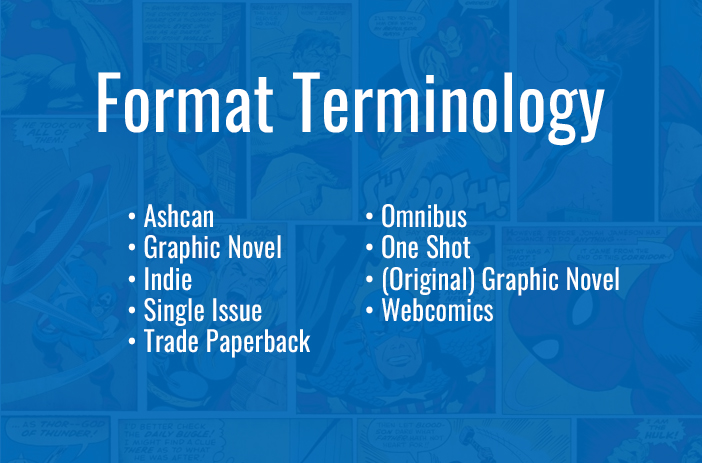
Ashcan – A promotional copy of a comic given to retailers to advertise an upcoming book, usually not meant for sale. Sometimes, ashcans were used to establish trademarks or copyrights before the actual creation of a comic.
Graphic Novel – Typically a long-form comic, sometimes square-bound. Usually a self-contained story, often with more adult themes and complex narratives. The definition is variable depending on who you talk to.
Indie – Indie comics are created by small publishers rather than larger corporate entities. Short for "independent."
Single Issue – A single book, often around 20-30 pages long, usually part of a more extended series and numbered with its place in the story.
Trade Paperback – A collected edition of a story or story arc, also referred to as a "trade." These usually contain around 5-10 issues of a story and are meant to make it easier to collect a whole run without buying individual issues.
Omnibus – A more extensive single volume collection of issues in a story, often containing an entire story run or 25+ issues of a run (for longer runs.)
One Shot – A single-issue, stand-alone comic that isn't part of a more extensive run; or a single-issue story in the middle of a more extensive run but can be read as a stand-alone book.
(Original) Graphic Novel – Typically, a comic series that is released directly in trade paperback form without being released as individual issues.
Webcomics – Comics published online. These can be a traditional format similar to newspaper comics, or they can be avant-garde comics making use of digital-only integrations like the infinite scrolling canvas or the use of animation in panels.
Quality and Condition Terminology
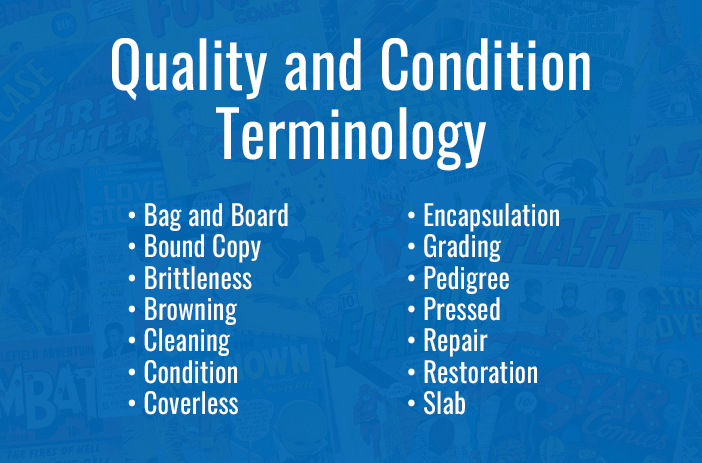
Bag and Board – A "bag and board" is a way to store and preserve comics by placing them in a protective plastic bag, usually with a stiff cardboard sheet (a backing board) to prevent slouching, bending, or other damage. This technique is the most common way to store comics to preserve them without the effort or expense of grading and encapsulation.
Bound Copy – A series of comic issues that have been cut or trimmed, then sewn together into a book, like a prototype omnibus. Publisher-bound copies are typically rarer and more valuable than owner-bound copies.
Brittleness – Old comics, particularly those exposed to the elements, experience degrading paper quality that leaves them brittle and prone to falling apart.
Browning – Browning occurs when the paper used in comics oxidizes over time, particularly when exposed to the elements; typically, the more browning present in a book, the lower the quality. For older comic books, it's nearly impossible to find issues without browning, so this may be less of a problem.
Cleaning – A process wherein dirt, pencil marks, and other blemishes are removed from a book without damaging, replacing, or otherwise altering the underlying comic book.
Condition – The grade of a comic reflects its condition. Conditions can be:
- Gem Mint: The comic is perfect, free of damage and manufacturer defects. A 10/10 on grading scales.
- Mint: The comic is as close to perfect as possible, with no blemishes or damage. A 9.9 on grading scales.
- Near Mint: The comic is in excellent condition but may have minor defects from being handled, read, stored, or with minor manufacturing defects. 9.0+ on grading scales.
- Very Fine: A well-preserved but handled copy of a comic; generally a "sweet spot" for collectors looking for good display pieces on a budget. 7-9 on grading scales.
- Fine: A high-condition but slightly damaged comic, usually with one moderately significant blemish or defect reducing the value. 5-7 on grading scales.
- Very Good: A comic with several moderate defects or damage. 3-5 on grading scales.
- Good: A comic that has been handled extensively and worn because of it; damaged but not beyond acceptable limits. 1.5-3 on grading scales.
- Fair: A well-worn, damaged, or highly blemished copy of a comic. 1-1.5 on grading scales.
- Poor: A comic that is not in good condition, usually with several significant defects or damage such as torn pages, stains, creases, or missing pages. 0-1 on grading scales.
Coverless – A comic that has had the cover removed. Covers are frequently lost through reading and improper storage of a comic. The store may have also removed covers in an attempt to destroy risqué art or as part of a return and reimbursement program from a publisher for unsold issues. Coverless does not mean valueless; particularly high-value key issues have demand for coverless comics as filler for collections by collectors who can't otherwise afford the intact version.
Encapsulation – Also known as "Slabbing," this practice involves encasing a comic in a thick plastic container to preserve and protect it. This slab is accompanied by grading the book's condition and typically "locks" the comic's condition and, consequently, the book's value. Encapsulation is generally done only by a grading authority like CGC.
Grading – The act of sending a comic to a comic authority like CGC for evaluation. The grade of a comic affects its value. The grade reflects the condition and is frozen via encapsulation.
Pedigree – Comics of an exceptionally high or noteworthy condition as part of a specific collection. The comic itself may not be as important as the fact that it was part of a more extensive collection such as the Mile High Collection.
Pressed – The act of removing minor indentations and bends in a comic through heat, humidity, and a flat press to flatten the comic. Modern pressing services are often offered by companies like CGC and can improve the quality and grade of a book with minor blemishes. The company must clean a book before pressing. Otherwise, dirt may be packed into the pages, further damaging them. Pressing isn't typically considered "restoration" by graders.
Repair – The process of cleaning and repairing a damaged book may include using tape, glue, or other additives. Usually considered a defect or damage to serious collectors.
Restoration – An intensive process meant to improve the visual qualities of a comic. Restoration can include anything from cleaning and repair to adding missing ink. Restoration can potentially reduce the value of a comic, and comics will receive a lower rating when graded.
Slab – See Encapsulation.
Organization Terminology
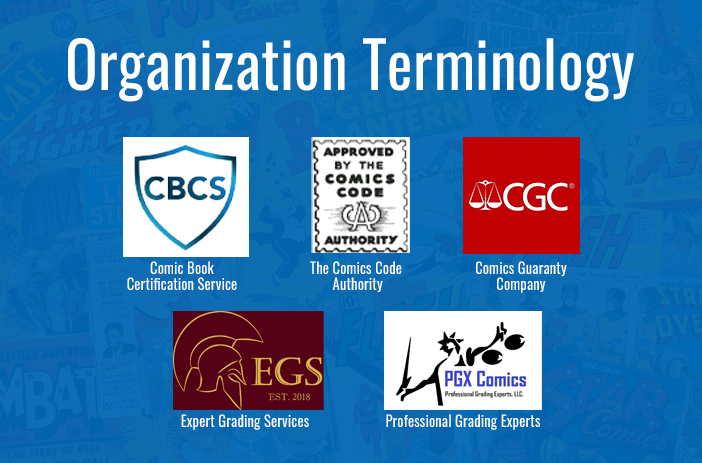
CBCS – Comic Book Certification Service. One of several comic grading agencies often considered the "second best" option after CGC. Learn more here.
CCA – The Comics Code Authority was formed in 1954 to regulate the comics industry. The code regulated content, including adult themes, and was eventually abandoned across the board in the 2000s and 2010s.
CGC – Comics Guaranty Company, the premier go-to grading agency for comics available today. Read more here.
EGS – Expert Grading Services. They are another comics grading agency that is relatively new (founded in 2018) and the source of much skepticism in the collector's circles at the moment.
PGX – Professional Grading Experts. Another comic grading agency, this company had a rocky early history but has done a lot to improve its reputation and reliability. It still plays second fiddle to CGC and CBCS.
Your Questions
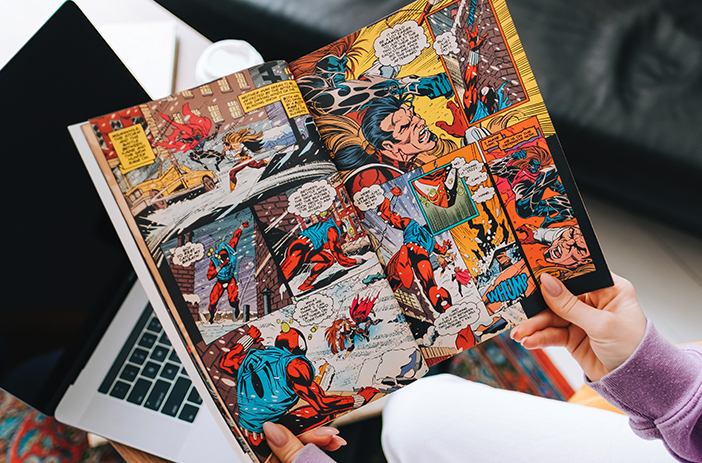
Did we miss anything?
There are plenty of comics-related terms we didn't cover, like those relevant to the creation (writer, inker, artist, publisher) and the layout (gutter, word balloon, panel), but, given that we focus on buying and selling comics, we figured terminology related to the trade of comics would be more relevant. Still, if there's something you have a question about, feel free to leave a comment! We love to hear from you, and we're standing by to answer any questions.
Please drop us a line if you have a collection or an individual comic you would like appraised. You can also fill out our appraisal form to get your collection professionally appraised at no cost.
We're not a grading authority, but we can give you an excellent idea of what your collection may be worth and help advise you on the following steps to take if you want to sell.


